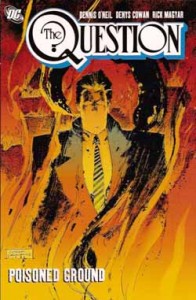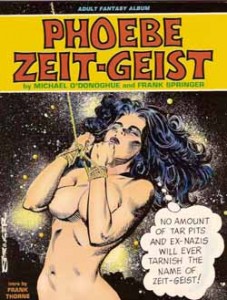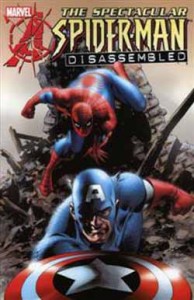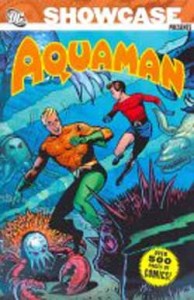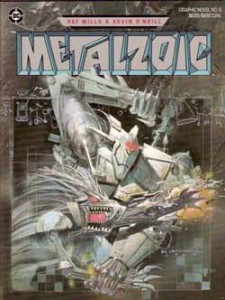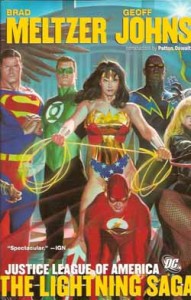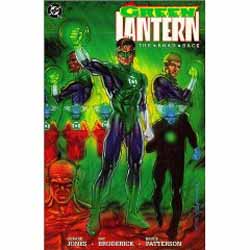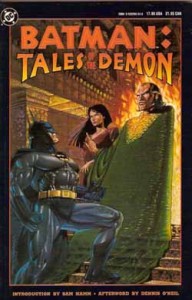
By various (DC Comics)
ISBN: 978-0-93028-994-2
This themed collection re-presents some of the key clashes between the Gotham Guardian and the immortal mastermind and eco-activist Ra’s Al Ghul – a contemporary and more acceptable visual embodiment of the classic inscrutable foreign devil as typified in a less forgiving age as the Yellow Peril or Dr. Fu Manchu. This kind of alien archetype permeates fiction and is an overwhelmingly powerful villain symbol, although the character’s Arabic origins, neutral at the time, seem to embody a different kind of ethnic bogeyman in today’s post 9/11 world.
The concept of a villain who has the best interests of the planet at heart is not a new one, but Ra’s Al Ghul, whose avowed intent is to reduce teeming humanity to viable levels and save the world from our poison, hit a chord in the 1970s – a period where ecological issues first came to the attention of the young. It was a rare kid who didn’t find a note of sense in what the Demon’s Head planned.
Although the character is best remembered for the O’Neil/Adams collaborations, this book kicks off with a seminal story from Detective Comics #411 that featured the sinister League of Assassins (introduced in #405 I believe) and the exotic Talia. ‘Into the Den of the Death Dealers’ was written by Denny O’Neil and illustrated by the great Bob Brown, and inked by Dick Giordano.
‘Daughter of the Demon’ from Batman #232 by O’Neil and Neal Adams (with Giordano inking) is one of the signature high-points of the entire Batman canon, an exotic mystery yarn that draws the increasingly Dark Knight from Gotham’s concrete canyons to the Himalayas in search of hostages Robin and Talia. If you’re one of the few who hasn’t read this much reprinted tale I’m not going to spoil the joy that awaits you.
From Batman #235, with penciller Irv Novick joining regulars O’Neil and Giordano comes ‘Swamp Sinister’ a mystery tale and bio-hazard drama that gives some early insights into the true character of Talia and her ruthless sire. ‘Vengeance for a Dead Man’ (Batman #240) by the same creative team sets the scene for the groundbreaking “series-within-a-series†soon to follow as Batman uncovers one of Ra’s Al Ghul’s less worthy and far more grisly projects. As a result there was open war between Batman and the Demon…
Batman #242-244 and the epilogue from #245 (not included in this volume) formed an extended saga taken out of normal DC continuity, relating what was to be the final confrontation between two opposing ideals. Novick penciled the first part ‘Bruce Wayne – Rest in Peace!’ which saw Batman gather a small team of allies, including the still active today Matches Malone, to destroy the Demon forever, and Neal Adams returned with the second part ‘The Lazarus Pit’ which seemed to we consumers of the day a brilliant conclusion to the epic. But with the last three pages the rug was pulled out from under us and the saga continued!
How sad for modern fans with so many sources of information today: the chances of creators genuinely surprising their devoted readers are almost nonexistent but in the faraway 1970s, we had no idea what to expect from #244 when ‘The Demon Lives Again!’ hit the shops and news-stands. In a classic confrontation Batman triumphed and Ra’s Al Ghul disappeared for many years. He was considered by DC as a special villain and not one to be diluted through overuse. How times change…
In 1978 the company was experimenting with formats and genres in a time of poor comic sales. Part of that drive and was an irregular anthology entitled DC Special Series. From the all-Batman 15th issue comes an oddly enticing little gem scripted by Denny O’Neil and drawn by a talented young newcomer called Michael Golden, inked by the ubiquitous Dick Giordano. ‘I Now Pronounce you Batman and Wife’ is a stylish, pacy thriller that anticipates the 1980s sea-change in comics storytelling, but the most interesting aspect of the tale is the plot maguffin that inspired a trilogy of graphic novels in the 1990s and today’s Batman and Son (ISBN13: 978-1-84576-429-6) serial.
The volume concludes with another key multi-part epic, this time from Detective Comics #485, 489 and 490. Although picky me still wishes that all parts were included the truncated version here has no significant loss of narrative flow as Batman becomes involved in a civil war for leadership of the Al Ghul organization between the Demon and the aged oriental super-assassin the Sensei – who older fans will know as the villain behind the murder of Deadman.
It all begins with ‘The Vengeance Vow!’ as a long-standing member of the Batman Family is murdered, drawing the Caped Crimebuster into battle with the deadly martial artist Bronze Tiger. The concluding parts ‘Where Strike the Assassins!’ and ‘Requiem for a Martyr!’ whilst perhaps not as powerful as the O’Neil/Novick/Adams/Giordano run are nevertheless a stirring thriller with a satisfactory denouement, elevated to dizzy heights by the magnificent artwork of Don Newton. Inked here by Dan Adkins, Newton’s Batman could well have become the definitive 1980s look, but the artist’s tragically early death in 1984 cut short what should have been a superlative career.
Ra’s Al Ghul has become just another Bat-Foe in recent years, familiarity indeed breeding mediocrity if not contempt. But these unique tales from a unique era are comics at there very best and this book is well overdue for a definitive re-issue.
Â
© 1970, 1971, 1972, 1978, 1979, 1980, 1998 DC Comics. All Rights Reserved.

